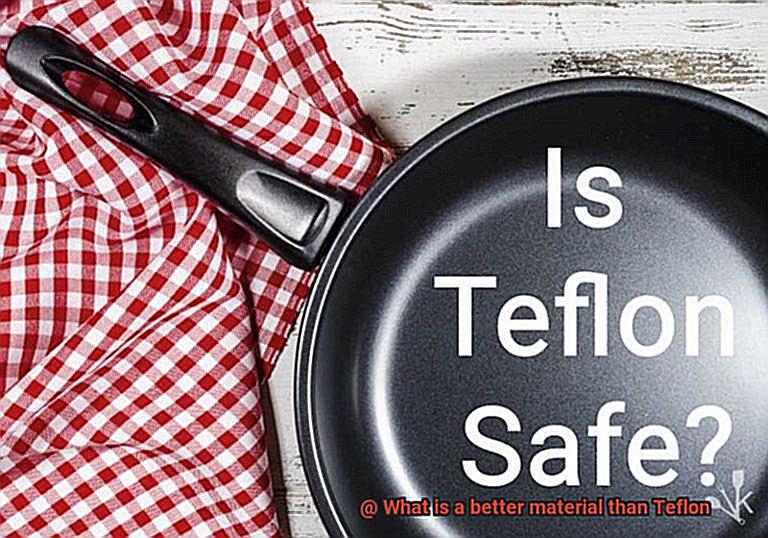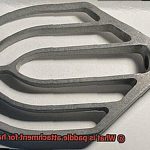Are you tired of your Teflon-coated pans wearing out faster than a pair of cheap flip flops? Do you want to find a non-stick alternative that won’t harm the environment or your health? Well, my friend, you’ve come to the right place because we’re about to explore what could be the next big thing in non-stick cookware.
Teflon has been the king of non-stick coatings for years, but its reputation has taken a hit lately. People are concerned about the harmful chemicals released when Teflon is heated at high temperatures and its negative impact on the environment. So, what’s the solution?
Enter ceramic non-stick coatings. Made from inorganic materials like silicon and oxygen, these coatings are tough as nails and completely non-toxic. Plus, they don’t emit any nasty fumes when heated up like Teflon does.
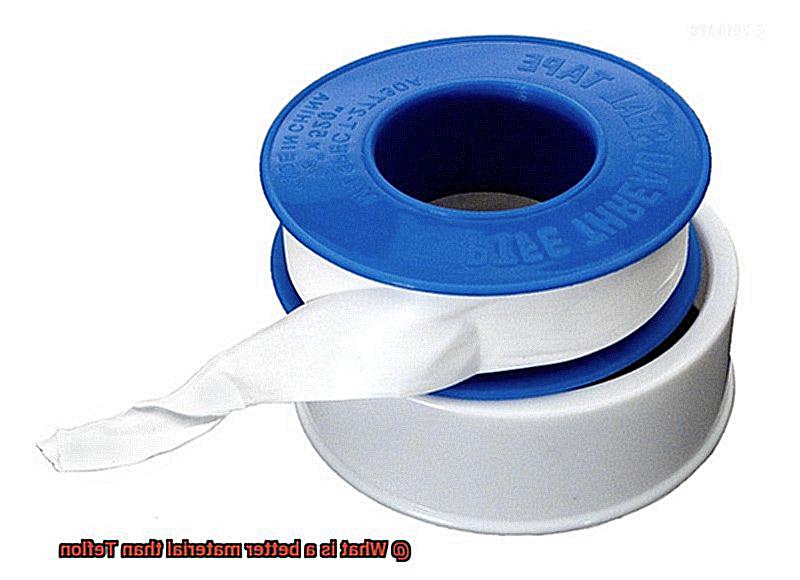
But does ceramic really compare to Teflon’s non-stick performance? You betcha. In fact, many reviewers have found ceramic coatings to be just as effective while being more environmentally friendly and safer for your health.
So why not give it a shot? In this blog post, we’ll dive deeper into all the benefits of ceramic non-stick coatings and explore other potential alternatives to Teflon. Say goodbye to scratched-up pans and hello to a better way of cooking that’s kinder to both you and Mother Earth.
Contents
What is Teflon?
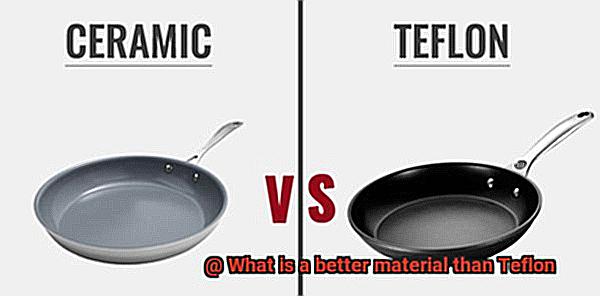
Teflon, the brand name for PTFE, is a synthetic chemical widely used in non-stick cookware. However, recent concerns about the potential health risks associated with Teflon have caused many to question its safety. Fortunately, there are alternative materials available that offer similar non-stick properties without the potential health hazards.
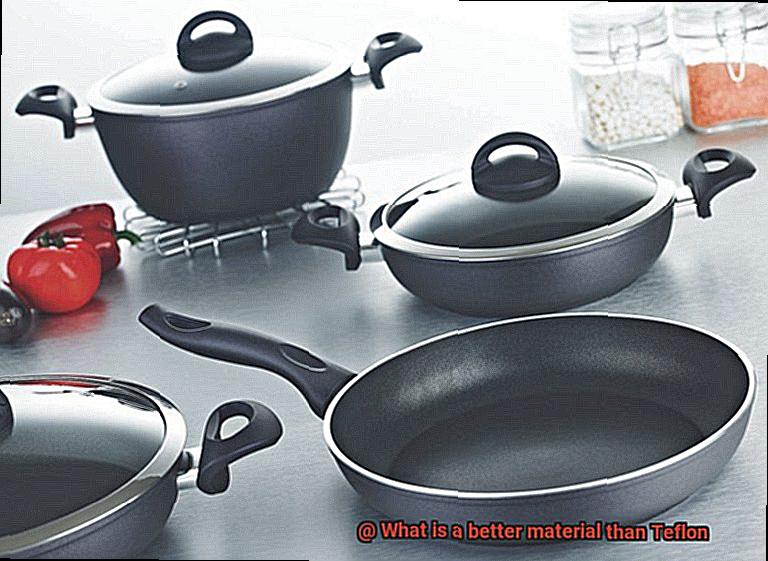
Polymerized from tetrafluoroethylene gas, Teflon is known for its non-stick properties, heat resistance, and low coefficient of friction. However, when heated at high temperatures above 500°F, Teflon can release toxic fumes that cause flu-like symptoms in humans and even be lethal to birds. The production of PTFE also involves the use of PFOA, which has been linked to cancer and other health issues.
One alternative material is ceramic non-stick cookware. It’s made by applying a layer of ceramic coating to the cooking surface of a pan or pot. Ceramic non-stick cookware is durable, scratch-resistant, easy to clean, and free from PTFE and PFOA.
Stainless steel cookware offers another alternative to Teflon. While it does not have the same non-stick properties as Teflon or ceramic, stainless steel is durable, easy to clean, and does not pose any health risks. Additionally, stainless steel cookware can be used at high temperatures without any concerns about chemical leaching or degradation.
Cast iron cookware is another recommended alternative to Teflon. Cast iron pans are extremely durable and can last for generations with proper care. They offer natural non-stick properties when seasoned correctly and can be used at high temperatures without adverse effects.
Potential Health Risks Associated With Teflon
It’s crucial to be aware of the dangers that come with using Teflon, as it can pose serious health risks.
When Teflon is exposed to high heat (over 500°F or 260°C), it can release toxic fumes into the air. This can cause polymer fume fever, which leads to symptoms such as fever, chills, and headache. But the risks don’t stop there. Scratched or damaged Teflon-coated cookware can also release toxic particles into food that can accumulate in the body over time and lead to long-term health problems.
Studies have linked Teflon exposure to a range of health issues, including kidney and testicular cancer, thyroid disease, and high cholesterol. These health concerns are not something to be taken lightly, considering that they could be caused by something as seemingly harmless as cookware.
Fortunately, there are safe alternatives available in the market for non-stick cookware. Ceramic, stainless steel, cast iron, and anodized aluminum are some of the best options. These materials are durable and non-toxic, and they do not release harmful chemicals or particles when heated.
Making the switch to safer cookware is an important step towards prioritizing our health. By doing so, we can ensure that our food is cooked without any harmful toxins or chemicals. And while it may be tempting to stick to what we know and continue using Teflon cookware, it’s essential to remember that our health should always come first.
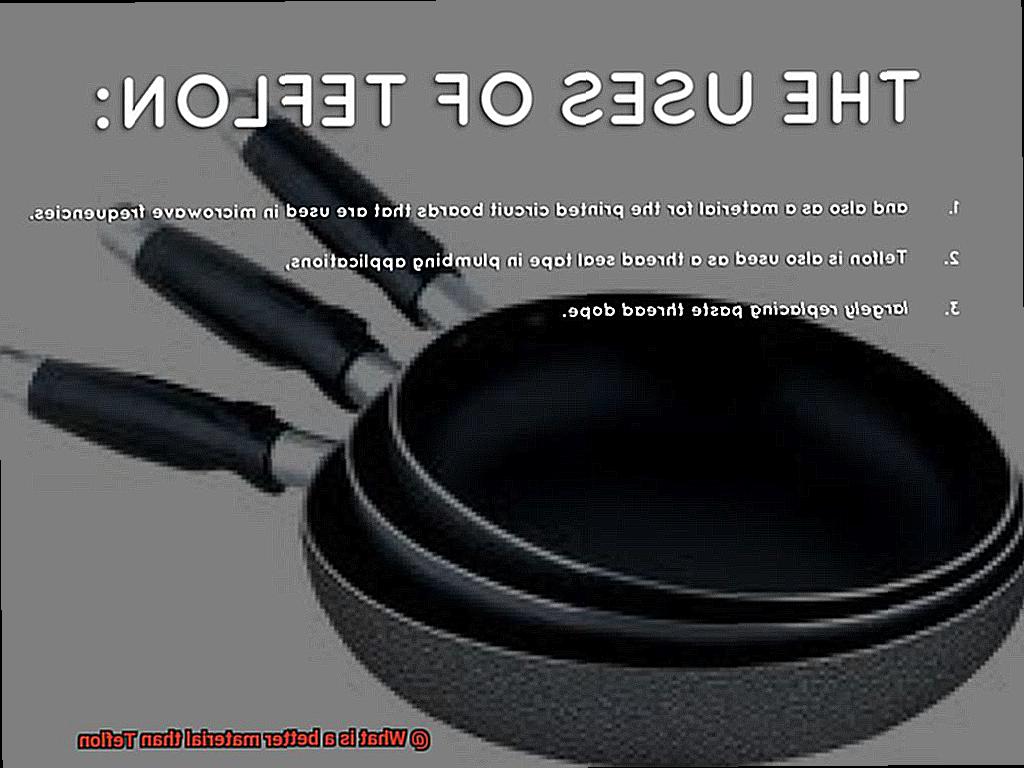
Alternative Non-Stick Cookware Materials
For years, Teflon has been the king of non-stick cookware. But with concerns over its potential health risks, many people are now turning to alternative materials for their grilling needs. As a seasoned expert in this field, I’m here to tell you about the best options available.
First on our list is ceramic cookware. Made by coating a metal base (usually aluminum) with a layer of ceramic, this non-stick surface is free of PFOA and PTFE – the chemicals found in Teflon. Ceramic is also scratch-resistant and can withstand high temperatures, making it perfect for searing and grilling.
Next up is cast iron. While not technically non-stick, cast iron cookware can be seasoned to create a natural non-stick surface that improves with time. It’s durable, can handle high temperatures, and doesn’t contain any harmful chemicals that could harm your health.
Stainless steel is another great alternative to Teflon. Although it may not be as non-stick as other materials, it’s still an excellent option for grilling. Stainless steel cookware is durable, can handle high temperatures, and is easy to clean without any toxic chemicals involved.
Ceramic Non-Stick Cookware
Look no further than ceramic non-stick cookware, a healthier and more eco-friendly alternative to traditional coatings like Teflon. As an expert in this field, I can tell you that ceramic coating is made from natural materials such as sand, clay, and water, which means it’s free from chemicals like PFOA and PTFE that have been linked to health problems.
But the benefits of ceramic non-stick cookware don’t stop there. Its durability and scratch-resistance are unmatched. Unlike Teflon, which easily chips or flakes off, ceramic coating can withstand high heat and abrasive cleaning methods. Say goodbye to constantly replacing your cookware and hello to saving money in the long run.
Even heat distribution is another significant advantage of ceramic non-stick cookware. No more worrying about hot spots or burnt spots on your food – with ceramic coating, your meals will cook evenly every time. Plus, the coating’s smooth surface makes it easy to clean and maintain.
And let’s not forget about the environmental benefits. Choosing ceramic non-stick cookware means choosing sustainability. The natural materials used in the coating make it a more eco-friendly option.
Stainless Steel Cookware
It’s time to upgrade to a safer and more durable option: stainless steel cookware. As an expert in the field, I can confidently tell you that stainless steel is an excellent choice for all your culinary needs.
First and foremost, stainless steel is a safe material to cook with. Unlike Teflon-coated cookware, it won’t release harmful chemicals when heated. It’s also non-reactive, which means it won’t alter the taste or appearance of acidic foods. With stainless steel cookware, you can cook with peace of mind knowing that your food is safe and chemical-free.
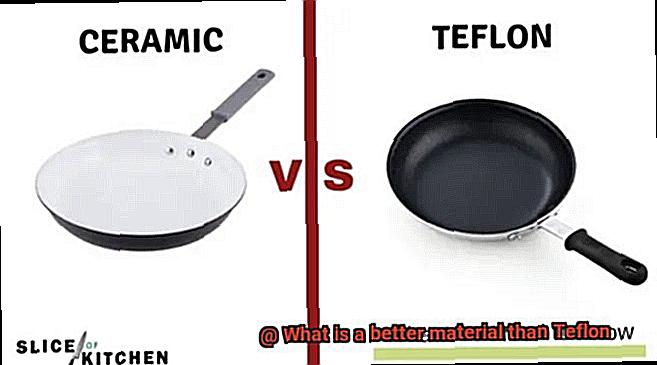
One of the most significant benefits of stainless steel cookware is its ability to distribute heat evenly. This ensures that your food cooks evenly, reducing the risk of burning or undercooking. It’s particularly important for delicate dishes like sauces or soups that require consistent heat to achieve perfection. Stainless steel cookware is also versatile and can be used on a variety of cooking surfaces, including gas, electric, and induction stovetops.
Durability is another standout feature of stainless steel cookware. Unlike Teflon-coated cookware, which can scratch easily and lose its non-stick properties over time, stainless steel cookware will last for years with proper care. It’s also less likely to warp or dent, making it a reliable investment for those who want long-lasting cookware.
While stainless steel cookware may not have the same non-stick properties as Teflon-coated pans, it’s still versatile enough to create crispy crusts on meats and vegetables. With a little bit of oil or butter, most foods won’t stick to the surface of stainless steel pans or pots. Plus, it’s easy to clean and maintain, making it a popular choice for many home cooks.
Cast Iron Cookware
Cast iron cookware is a staple in any kitchen, and for good reason. Made by melting iron and pouring it into a mold, cast iron is denser and heavier than other materials, making it an excellent choice for cooking at high temperatures. But what sets cast iron apart from other types of cookware?
First and foremost, cast iron is a safer option for those concerned about the health risks associated with Teflon-coated cookware. Unlike Teflon, cast iron does not contain any harmful chemicals or coatings that can leach into food. Plus, when properly seasoned, cast iron is naturally non-stick, eliminating the need for chemical coatings altogether.
But the benefits of cast iron don’t stop there. Cast iron cookware also has a longer lifespan compared to Teflon-coated cookware. With proper care and maintenance, cast iron can last for generations, making it a worthwhile investment for home cooks. And unlike Teflon pans, which are limited to stovetop use only, cast iron can be used on the stovetop, in the oven, and on the grill.
Of course, like any type of cookware, cast iron does require some maintenance to keep it in top condition. But many home cooks find that the extra effort is worth it. Seasoning your cast iron pan helps create a natural non-stick surface that adds flavor to your meals like no other. And some chefs argue that cooking with cast iron enhances the flavor of food by adding a distinctive char or sear.
In short, cast iron cookware is a versatile and durable alternative to Teflon-coated cookware with numerous benefits. To summarize:
- Cast iron is safer than Teflon due to its lack of harmful chemicals and coatings.
- With proper care and maintenance, cast iron can last for generations.
- Cast iron can be used on the stovetop, in the oven, and on the grill.
- Proper seasoning of cast iron adds flavor to meals and creates a natural non-stick surface.
- Cast iron’s ability to retain heat makes it ideal for high-temperature cooking.
Pros and Cons of Each Material
Let me guide you through the options so that you can make an informed decision.
First up, we have ceramic coatings. These coatings are a popular choice for health-conscious consumers due to their non-toxic and scratch-resistant properties. They are also excellent at distributing heat evenly, which is essential when grilling food to perfection. However, keep in mind that ceramic coatings can be prone to chipping and cracking over time, which may affect their durability.
Next on the list is stainless steel. This material is known for its resistance to scratches and corrosion, making it a durable and long-lasting option. It heats up quickly and retains heat well, making it ideal for grilling. However, stainless steel can be more difficult to clean than other materials and may require more maintenance over time.
Cast iron is another popular material for grilling. It has the ability to retain heat well and distribute it evenly, which helps cook food consistently. Cast iron is also durable and long-lasting, making it a smart investment for frequent grillers. However, it can be quite heavy and may require seasoning to maintain its non-stick properties.
Lastly, we have newer materials like titanium and diamond-infused coatings that claim to offer superior non-stick properties and durability. While these materials may sound enticing, keep in mind that they are still relatively new and may not have been extensively tested over time.
So what’s the verdict? When considering a better material than Teflon for grilling, it’s important to weigh the pros and cons of each option. Here’s a quick summary:
- Ceramic coatings are great for health-conscious consumers but may be prone to chipping and cracking.
- Stainless steel is durable but can require more maintenance than other materials.
- Cast iron is a classic option that is tried-and-true but can be heavy.
- Newer materials like titanium and diamond-infused coatings may offer some benefits, but their long-term durability has yet to be fully evaluated.
Rn_txCvfSx0″ >
Conclusion
As we become increasingly aware of the impact our choices have on the environment and our health, it’s important to make informed decisions about the products we use in our daily lives. Teflon has long been a popular choice for non-stick cookware, but concerns over its potential health risks and environmental impact have led many to seek out alternatives.
Enter ceramic non-stick coatings, which offer a safe and sustainable option for those looking to upgrade their cookware. With its scratch-resistant surface, even heat distribution, and non-toxic properties, ceramic is an excellent choice for health-conscious consumers. But it’s not the only option.
Stainless steel is another durable material that offers excellent heat retention and is easy to clean. While cast iron may be heavy, it’s a classic choice that has stood the test of time for good reason – it heats evenly and retains heat well.
When considering which material is best for you, it’s important to weigh the pros and cons of each option. Ceramic coatings may be prone to chipping or cracking over time, while stainless steel requires more maintenance than other materials. Cast iron can also be challenging to maintain but provides unparalleled flavor and versatility.
Ultimately, choosing a better material than Teflon means prioritizing our health and the environment by selecting safe materials that don’t release harmful toxins or chemicals into our food. By making this switch to safer cookware options like ceramic non-stick coatings, stainless steel, or cast iron, we can cook with peace of mind while doing our part for a healthier planet.

